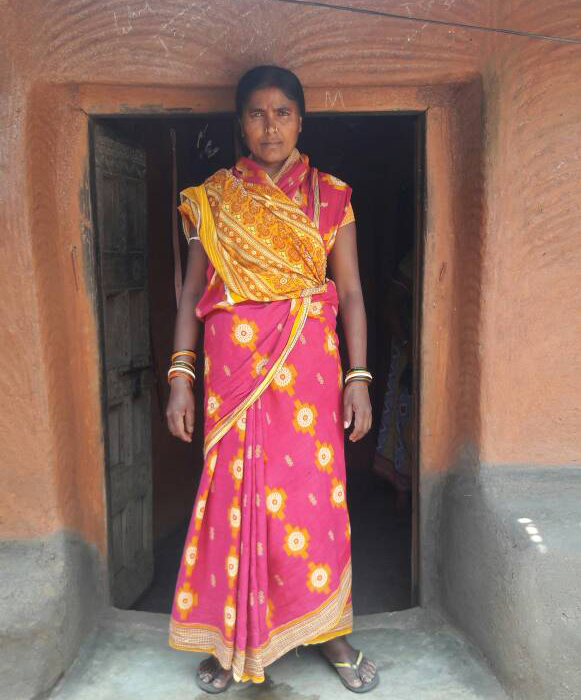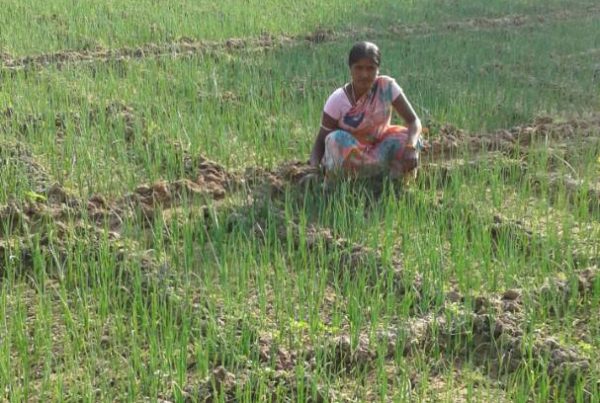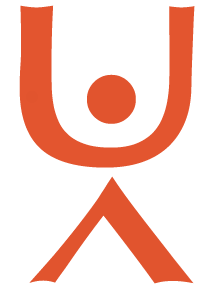Living with their eldest son and two daughters in Govindpur, Odisha, India, Saija Chhura and her husband Niranjan struggled daily to ensure their family’s basic needs and survival.
They didn’t own any productive assets by which they could earn a living, and so they were forced to find agricultural labor in nearby villages and migrate to find construction labor in distant cities like Raipur, 209 km away. Constantly migrating kept their children out of school and prevented them from earning a sustainable income.
When Saija’s husband contracted malignant malaria and could no longer work, their situation became dire. To pay for her husband’s medical bills, Saija had to borrow $310 (Rs. 20,000) from a local moneylender at an extremely high interest rate of 10% per month (120% per annum). Then, to repay just the interest on the loan, she mortgaged her only asset, 0.3 acres of barren land, in exchange for just $62 (Rs. 4,000).
But Saija still needed to repay the rest of the loan. She migrated to Raipur for 6 months, finding physically exhausting hard labor and eventually earning enough to pay back the moneylender.
However, on her return to Govindpur, Saija found her house in ruins. She had no way to pay for repairs, no source of income, and a barren piece of mortgaged land. When Trickle Up and our government partner Odisha Livelihood Mission (OLM) reached her village, project staff immediately identified Saija as a potential participant because her family lived well below the extreme poverty line ($1.90 a day).

In June 2016, Saija returned from migrant labor in Raipur for the last time.
She had already been a member of a self-help group (SHG) in her community, but had not attended meetings regularly due to her frequent migration. Even after she began attending meetings, she was reluctant to continue participating in the Indra Mahila Sanga SHG because she unable to contribute regularly to the group’s savings at first. But with counseling from her coach, Saija was convinced to continue with the SHG and begin saving.
During this time, an Indian government program allotted her SHG a Community Investment Fund (CIF) of $775 (Rs. 50,000). As a member of the group, Saija received $77 (Rs. 5,000) to begin a small business and cultivate crops during the winter months. With the help of her coach, she developed a livelihood plan. The first step was to use $62 (Rs. 4,000) of the CIF to pay off the mortgage on her land. With the remaining $15 (Rs. 1,000), she began selling vegetables in her community, making a profit of around $0.70 (Rs. 40-50) a day. This small income was key to covering her family’s daily expenses and basic needs.
With help from Trickle Up and OLM staff intended to connect participants with the government services they qualify for, Saija was connected to the Indian Government’s Mahatma Gandhi National Rural Employment Guarantee Act (MGNREGA) program. This program provides people living in poverty with guaranteed wage labor for a number of days each year. Saija now is guaranteed 34 days of work per year, and can save an additional $39 (Rs. 2,500) after meeting her daily household expenses.
In addition, Saija received a Trickle Up seed capital grant of $23 (Rs. 1,500), which transferred directly to her new personal bank account. She started cultivating onion on half of her land and greens on the remaining half. With regular training and support from her coach on how to maximize crop yield, Saija’s new agricultural activities generated $147 (Rs. 9,500) total.
Saija’s once barren land is now extremely productive, and she has finally been able to make repairs to her ruined home. She can regularly repay the low interest CIF loans from her SHG, and has greatly increased her financial literacy and inclusion, both in the SHG and with her personal bank account. Recently, Saija received training on goat rearing techniques and now plans to diversify her livelihood by raising goats.
“Now I do not have to migrate regularly to Raipur,” said Saija. “I can earn a decent living right here at my home. Now my life has shifted from uncertain migration to rewarding stability.”



